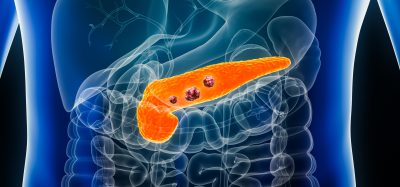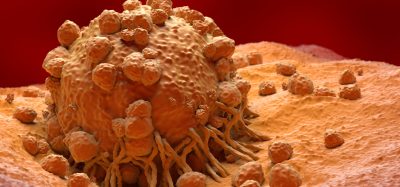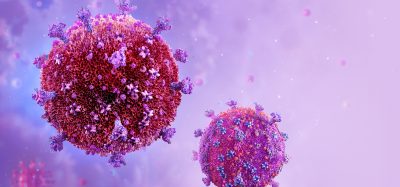The promise of mRNA therapeutics in producing the first regenerative treatment for SUI
Posted: 6 April 2022 | Dr Roger Dmochowski (Vanderbilt University Medical Center) | No comments yet
Dr Roger Dmochowski, Professor of Urology and Associate Surgeon in Chief for Vanderbilt University Medical Center, discusses the promise of potential new regenerative for Stress Urinary Incontinence.

Stress Urinary Incontinence (SUI) affects up to 50 percent of women across the globe at some point in their lifetime and is a significant problem in a largely underserved women’s health market. With increasing prevalence as the world’s population continues to age, SUI places a great burden on individuals and the economy, making new treatment options necessary.
In this article, Dr Roger Dmochowski, Urologist in Nashville, Tennessee, discusses the promise of potential new regenerative treatments that messenger RNA (mRNA) technology offers.
SUI is an enormous debilitating condition affecting millions of women
SUI is a prevalent bladder problem among women that increases with age and affects at least one in three women during their lifetime. Major risk factors include pregnancy, childbirth and menopause, impacting young teenage girls to middle- and old-age women.
SUI is an important field given its dramatic impact on women’s quality of life and the long-standing nature of this condition. It is a major women’s health concern and one for which a universally successful and minimally invasive treatment is lacking. In addition, it is associated with depression, other chronic conditions such as weight gain and falls resulting in long bone fractures. However, what is perhaps equally important is the crucial impact on health and the historic lack of appreciation of this as a major women’s health condition.
Until recently, the consumer’s voice has not been heard. Now, more than ever, women’s voices are being heard about the impact of this condition on their life quality and productivity. The expense associated with SUI is estimated to be in the billions of dollars to the US economy with a similar impact on the economies of the EU.
SUI is a prevalent bladder problem among women that increases with age and affects at least one in three women during their lifetime”
Women are desperately seeking low-risk options that have a long-term lasting effect in improvement or resolution of the condition. Many of the current options involve invasive surgery, which is associated with complications, morbidity, convalescence and the need for repeat surgery, often within five to 10 years after the initial procedure. Other, non-invasive options that have been historically utilised include behavioural and pelvic floor physiotherapy.
Thermal delivery devices are a novel, minimally invasive treatment option that uses different energy types, such as laser and radiofrequency, to apply to the various layers of the vaginal tissue. However, this approach yields only moderate outcomes compared to standard surgery. Urethral bulking also represents another minimally invasive option that depends on injecting different materials into the urinary control mechanism to increase resistance to unwanted urinary loss.
ARTICLE: Dr Paulina Nunez-Badinez, Scientific Researcher at Bayer AG, discusses pre-clinical research of pain related to endometriosis and why there is a lack of research around this area.
Read More
Limited innovation leading to successful treatments
Overall, treatment options are limited and success rates can vary. Defining the success of SUI treatments is a challenge, often characterised by surgeons using a series of objective tests. Only in the last few decades have surgeons asked the patient for their opinion on treatment outcomes and what they feel is a reasonable level of success. Traditionally a 50 percent improvement in incontinence episodes has been used. However, emerging data suggests that a 75 percent reduction is even more predictive of patient satisfaction on symptom questionnaires and general approbation of intervention. Obviously, the goal of an intervention should be a cure, but the reality is we attempt to reduce symptoms as much as we can for each unique individual. Ideally, a patient is the final arbiter of their condition and their ultimate approval with treatment outcome is the goal of treatment.
RNA-based therapeutics have unique potential for SUI treatment
The COVID-19 pandemic has demonstrated the potential of mRNAs. Meanwhile, a very exciting application of the mRNA technology is making strides in producing the first regenerative treatment for SUI. Versameb AG, a private biotechnology company based in Switzerland, is developing a potentially game-changing treatment for SUI. This is the first technology aimed at regenerating the patient’s own urinary sphincter using a unique RNA approach.
Women are desperately seeking low-risk options that have a long-term lasting effect in improvement or resolution of the condition”
The ease of delivery and the expected short response time along with the promise of durability due to rehabilitation of the patient skeletal muscle sphincter can really shift the frame of reference for intervention for women with this chronic problem. This therapy will not only play a role for those patients with established symptoms but potentially for those only beginning to experience the condition. Finally, it will also allow clinicians to prevent chronic suffering and impacts associated with the long-term experience with incontinence.
About the author
Dr Roger Dmochowski is Professor of Urology and Associate Surgeon in Chief for Vanderbilt University Medical Center, a member of the US FDA Bone, Reproductive and Urologic Drugs Advisory Committee (BRUDAC) and has co-authored the US FDA guidelines for regenerative medicine in urology. He has led and participated in numerous incontinence clinical trials and is the recipient of multiple awards, including the Lifetime Achievement Award of the Urodynamics Society for his accomplishments in the clinical treatment of incontinence. He is a Trustee and past President of the American Urology Board, a Fellow of the American College of Surgeons, the American Urological Association, the International Continence Society. Roger has published over 320 articles, 100 book chapters and 460 abstracts and over 260 presentations at various national and international meetings. He is the Editor-in-Chief of Neurourology and Urodynamics and serves on the editorial board for several scientific journals.
Related topics
Disease Research, public safety, Research & Development, RNAs, Therapeutics
Related conditions
Stress Urinary Incontinence (SUI)







